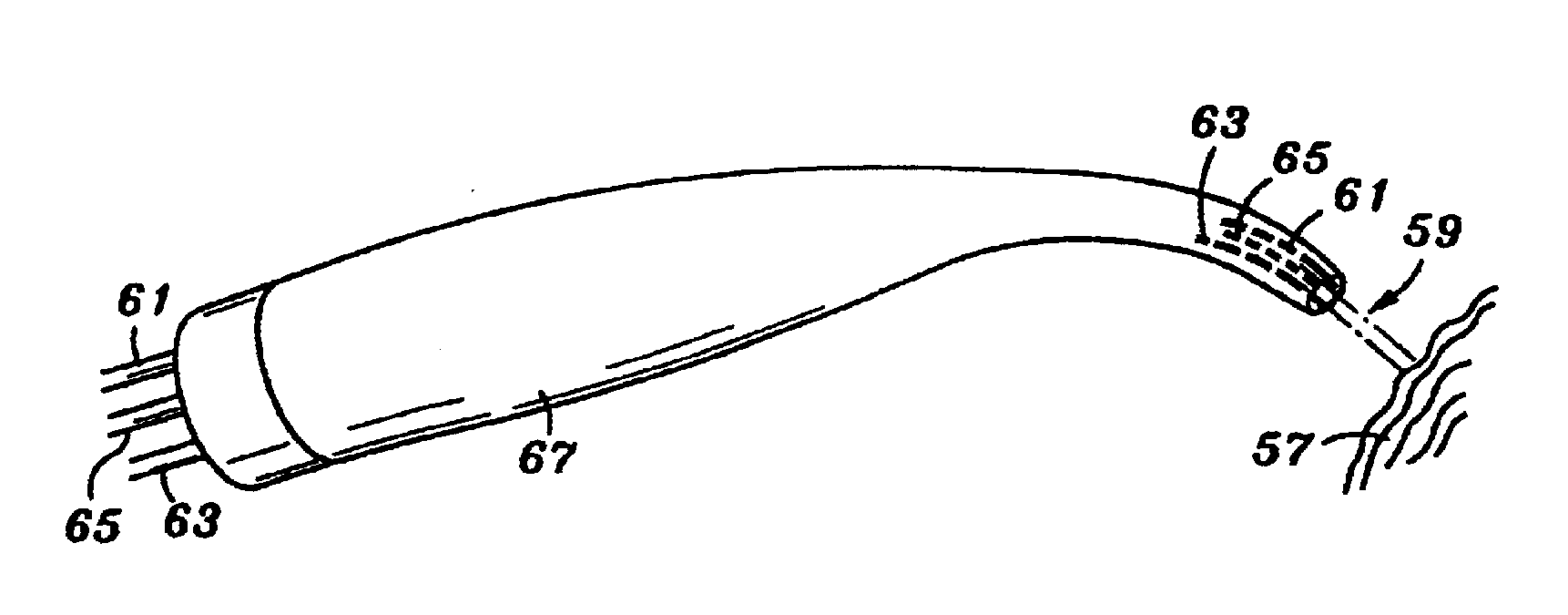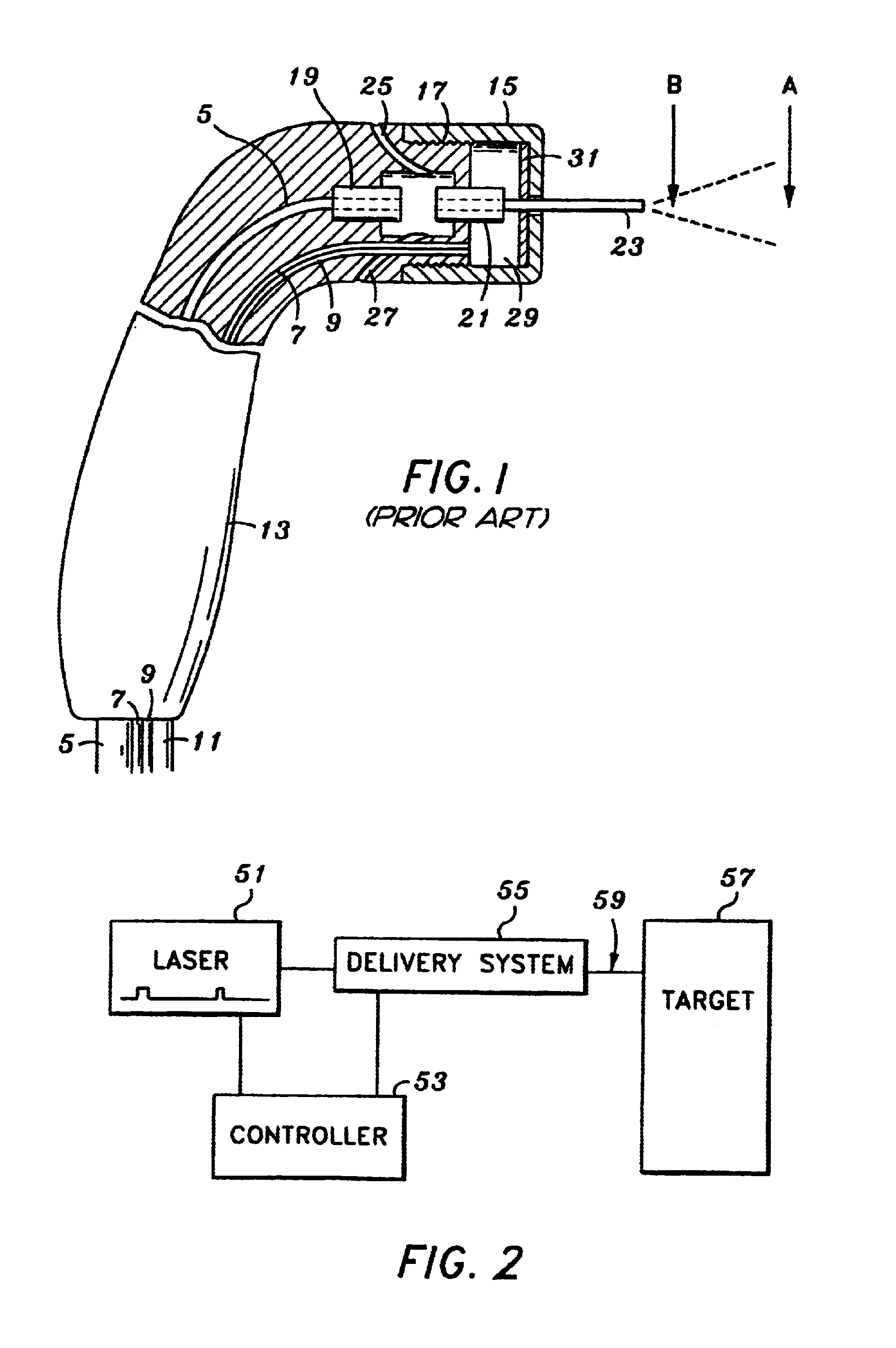Tunnelling probe
a technology of electromagnetic radiation and probes, applied in the field of electromagnetic radiation procedural devices, can solve the problems of ineffective prior art techniques, inadequate bacteria control, and causative agent in pulpal and periapical pathosis, and achieve the effect of accurate cutting operations
- Summary
- Abstract
- Description
- Claims
- Application Information
AI Technical Summary
Benefits of technology
Problems solved by technology
Method used
Image
Examples
Embodiment Construction
[0045]Reference will now be made to certain embodiments (e.g., certain illustrated embodiments) of the invention, examples of which are illustrated in the accompanying drawings. Wherever possible, the same or similar reference numbers are used in the drawings and the description to refer to the same or like parts. It should be noted that the drawings are in simplified form and are not presumed, automatically, to be to precise scale in all embodiments. That is, they are intended to be examples of implementations of various aspects of the present invention and, according to certain but not all embodiments, to be to-scale. While, according to certain implementations, the structures depicted in these figures are to be interpreted to be to scale, in other implementations the same structures should not. In certain aspects of the invention, use of the same reference designator numbers in the drawings and the following description is intended to refer to similar or analogous, but not necess...
PUM
 Login to View More
Login to View More Abstract
Description
Claims
Application Information
 Login to View More
Login to View More - R&D
- Intellectual Property
- Life Sciences
- Materials
- Tech Scout
- Unparalleled Data Quality
- Higher Quality Content
- 60% Fewer Hallucinations
Browse by: Latest US Patents, China's latest patents, Technical Efficacy Thesaurus, Application Domain, Technology Topic, Popular Technical Reports.
© 2025 PatSnap. All rights reserved.Legal|Privacy policy|Modern Slavery Act Transparency Statement|Sitemap|About US| Contact US: help@patsnap.com



